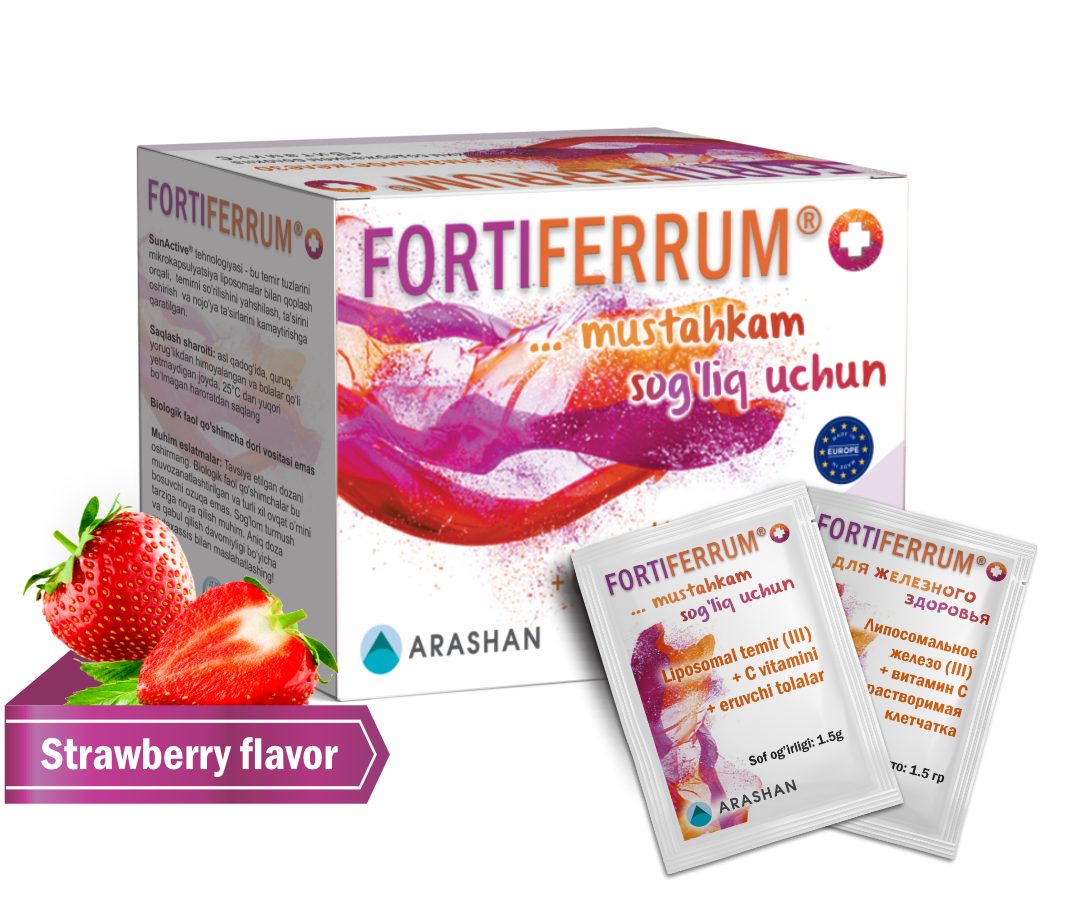THE SIGNIFICANCE OF IRON FOR HEALTH
Iron is a trace mineral found in many foods. Biologically, iron is able to improve the exchange of electrons between the III-valent form of iron (Fe3+) and the II-valent form of iron (Fe2+), which are involved in redox reactions.

Iron is the main component of the hemoglobin protein in red blood cells (erythrocytes), which are responsible for delivering oxygen to various tissues in our body. Without hemoglobin, the oxygenation of cells is not carried out. Iron is found primarily in the blood, but is also found in organs and muscles.
Our body is not able to produce iron on its own and gets it only from food. However, it is one of the most difficult nutrients to obtain, because it is contained in foods in small quantities, and the body absorbs it poorly.
The body needs to maintain iron homeostasis in order to ensure the normal functioning of biological activities, without causing adverse health effects.Monitoring of systemic iron levels is achieved by regulating absorption and retention.
The body needs to maintain iron homeostasis in order to ensure the normal functioning of biological activities, without causing adverse health effects.Monitoring of systemic iron levels is achieved by regulating absorption and retention.
IRON METABOLISM AND ABSORPTION
Iron metabolism includes the following series of processes:
- controlled absorption of iron in the intestine
- addition of iron to proteins
- addition of iron to proteins
- recycling of iron after the breakdown of erythrocytes
- preservation of iron
SOURCES OF IRON

Heme iron: This is part of the hemoglobin found in animal and dairy products, including meat, poultry, fish, and seafood. This type of iron is better absorbed and is about 20-25%, because it does not contain components that inhibit absorption (such as fiber).
Non-heme Iron: This is iron that is not part of hemoglobin and is found in green vegetables, cereals. This type of iron has a lower absorption of about 2-5%.
Non-heme Iron: This is iron that is not part of hemoglobin and is found in green vegetables, cereals. This type of iron has a lower absorption of about 2-5%.
In some cases where iron is not being absorbed enough, doctors recommend taking iron supplements.
Chimkent Street 8/2, Tashkent, Uzbekistan
Phones:
(+998) 93 111 10 05, 71 208 50 10, 71 208 89 00
E-mail: info@arashan.uz



